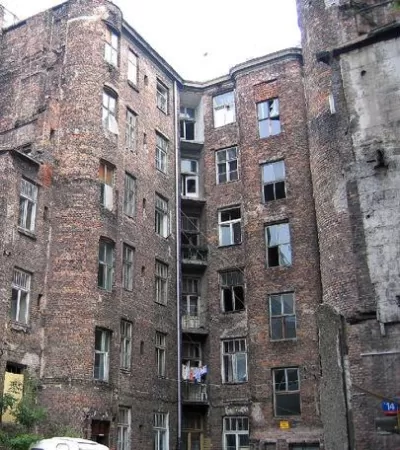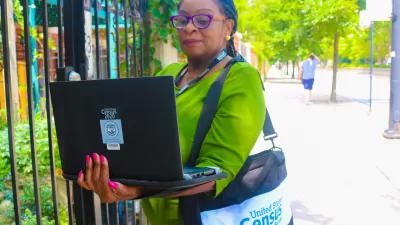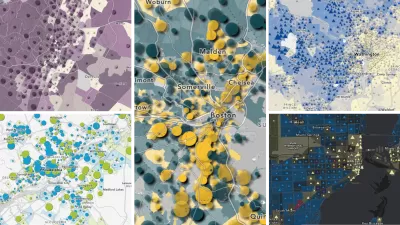The Architecture of Segregation: The slums are racially concentrated, on the rise, and spreading to the suburbs.

Concentrated poverty is defined by the U.S. Census as areas where 40 percent of the tract population lives below the federal poverty threshold, which is currently about $24,000 for a family of four. In a 2011 American Survey Brief, the Census Bureau explains why concentrated poverty matters: "Measuring this concentration of poverty is important because researchers have found that living in areas with many other poor people places burdens on low-income families beyond what the families’ own individual circumstances would dictate." Richard Florida adds that "concentrated neighborhood poverty shapes everything from higher crime rates to limited social mobility for the people—and especially the children—who live in these neighborhoods."
In a recently published paper entitled Architecture of Segregation: Civil Unrest, the Concentration of Poverty, and Public Policy, Paul Jargowsky presents a startling statistical view of rising racial and economic segregation, particularly in mid-size metropolitan areas. Here are some key findings.
Concentrated poverty has nearly doubled since the year 2000. Florida finds this "a troubling reversal of previous trends, particularly of the previous decade of 1990 to 2000, where Jargowsky’s own research found that concentrated poverty declined."
Concentrated poverty disproportionately affects minorities: "More than one in four of the black poor and nearly one in six of the Hispanic poor lives in a neighborhood of extreme poverty, compared to one in thirteen of the white poor," Jargowsky reports.
Ninety percent of concentrated poverty is in the nation’s metropolitan areas. "While there is clearly poverty in small towns and rural areas, it is uncommon to find neighborhoods (census tracts) in those places that match the high-level of poverty found in metropolitan ghettos and barrios," Jargowsky reports.
The increase in concentrated poverty is not occurring in the nation’s largest cities, but rather in small and mid-sized metropolitan areas of 500,000 to one million residents. Concentrated black poverty actually declined in the urban centers of New York, Los Angeles, and Washington, D.C.
With its removal to the suburbs, Jargowsky believes the crisis of concentrated poverty has been removed from the spotlight. "Given the contrary trend in these 'nerve center' metropolitan areas, it is perhaps not surprising the historic re-concentration of poverty since 2000 has largely escaped public attention—at least until the recent racial conflicts and civil unrest resurfaced urban poverty as a major policy concern." Indeed, as he points out, places like Ferguson are a "prime example" of the rise of concentrated black poverty in the inner-ring suburbs of mid-size metropolitan areas. "They are seeing places like Ferguson up close, but they are not seeing the larger set of forces that created Ferguson."
Florida agrees with Jargowsky that a failure to change policy will have long-term consequences. "The incomes and lives of generation after generation are being locked into terrifyingly divergent trajectories." While Jargowsky wants to see a counter-intervention in the housing market to correct for the consequences of exclusionary zoning, Florida adds three additional prescriptions: build affordable housing in urban centers; raise local minimum wages to reflect local prices; and invest in regional public transit systems.
FULL STORY: America's Biggest Problem Is Concentrated Poverty, Not Inequality

Trump Administration Could Effectively End Housing Voucher Program
Federal officials are eyeing major cuts to the Section 8 program that helps millions of low-income households pay rent.

Planetizen Federal Action Tracker
A weekly monitor of how Trump’s orders and actions are impacting planners and planning in America.

Canada vs. Kamala: Whose Liberal Housing Platform Comes Out on Top?
As Canada votes for a new Prime Minister, what can America learn from the leading liberal candidate of its neighbor to the north?

Washington State’s Parking Reform Law Could Unlock ‘Countless’ Acres for New Housing
A law that limits how much parking cities can require for residential amd commercial developments could lead to a construction boom.

Wildlife Rebounds After the Eaton Fire
Following the devastation of the Eaton Fire, the return of wildlife and the regrowth of native plants are offering powerful signs of resilience and renewal.

LA to Replace Inglewood Light Rail Project With Bus Shuttles
LA Metro says the change is in response to community engagement and that the new design will be ready before the 2028 Olympic Games.
Urban Design for Planners 1: Software Tools
This six-course series explores essential urban design concepts using open source software and equips planners with the tools they need to participate fully in the urban design process.
Planning for Universal Design
Learn the tools for implementing Universal Design in planning regulations.
Central Transportation Planning Staff/Boston Region MPO
Heyer Gruel & Associates PA
Institute for Housing and Urban Development Studies (IHS)
City of Grandview
Harvard GSD Executive Education
Regional Transportation Commission of Southern Nevada
Toledo-Lucas County Plan Commissions




























